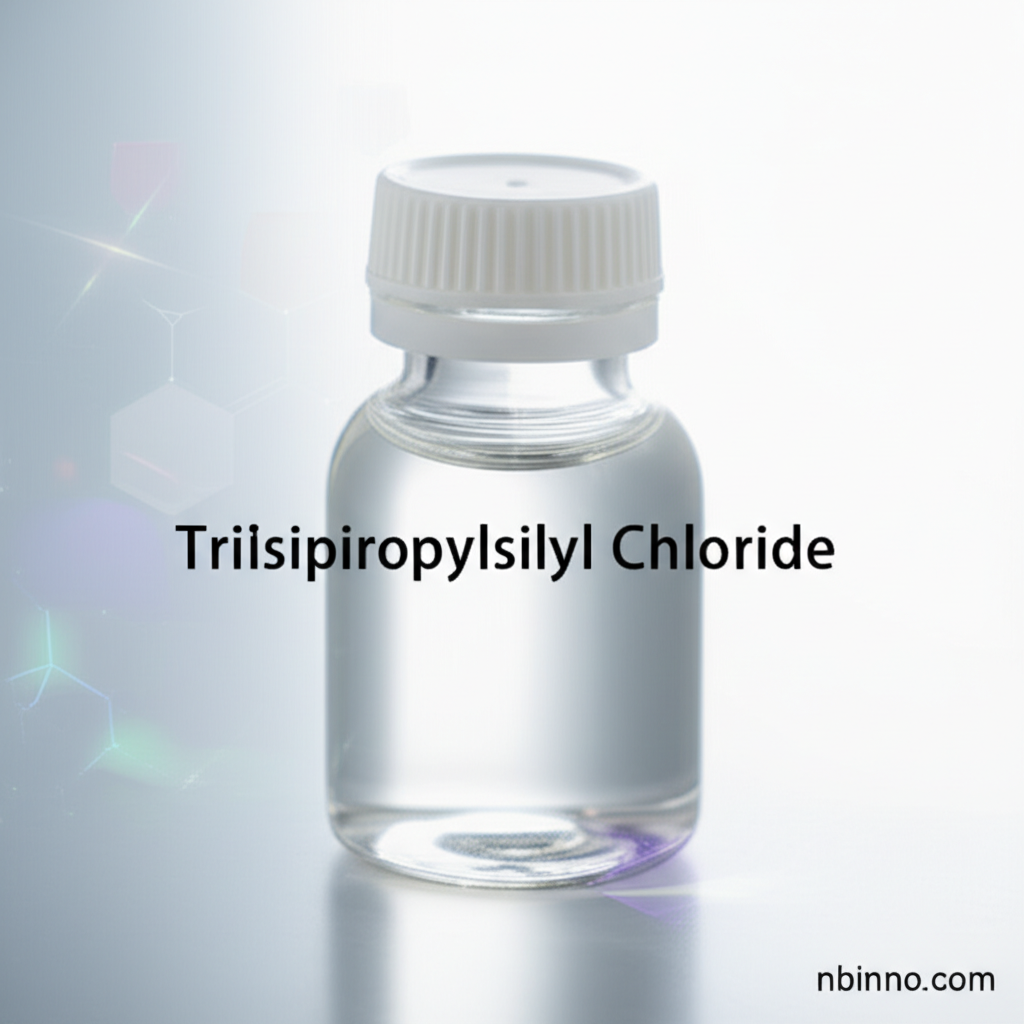Triisopropylsilyl Chloride: A Versatile Protecting Group in Organic Synthesis and Materials Science
Harnessing the power of silicon for precise chemical transformations and advanced material development.
Get a Quote & SampleProduct Core Value

Triisopropylsilyl Chloride
Triisopropylsilyl Chloride is a key organosilicon compound essential for modern organic synthesis and materials science. Its sterically hindered nature makes it an excellent choice for protecting hydroxyl groups, offering unique advantages in complex chemical transformations.
- Discover the effectiveness of Triisopropylsilyl Chloride as a protecting group in organic synthesis, enabling selective functional group manipulation.
- Learn how silyl ether formation using this compound provides crucial stability intermediates in multi-step reactions.
- Explore its role as a vital organic synthesis intermediate in the creation of pharmaceuticals and agrochemicals.
- Understand the benefits of using protecting alcohols in Grignard reactions with Triisopropylsilyl Chloride, circumventing unwanted side reactions.
Key Advantages
Precise Functional Group Protection
Leverage the specificity of Triisopropylsilyl Chloride for the protection of hydroxyl groups, ensuring desired reaction pathways and yields.
Enhanced Material Properties
Investigate the use of Triisopropylsilyl Chloride in developing silicon-based materials with improved hydrophobicity and thermal stability for high-performance applications.
Versatile Chemical Intermediate
Utilize Triisopropylsilyl Chloride as a versatile chemical intermediate, facilitating the synthesis of a wide array of fine chemicals and advanced compounds.
Key Applications
Organic Synthesis
Triisopropylsilyl Chloride is a cornerstone reagent for silyl ether formation, vital for protecting alcohols and amines during intricate synthetic sequences.
Pharmaceutical Development
As a crucial pharmaceutical intermediate synthesis component, it aids in building complex molecular architectures required for drug discovery.
Advanced Materials
Its role in creating novel silicon-based materials contributes to advancements in electronics, coatings, and other high-tech industries.
Surface Science
Triisopropylsilyl Chloride is employed for surface modification, imparting desirable properties like enhanced hydrophobicity and chemical resistance to various substrates.
Related Technical Articles & Resources
Why Choose Us?
Leverage our expertise and state-of-the-art infrastructure to accelerate your journey from discovery to commercial success.
Global Experience
With 20 years of R&D, manufacturing, and sales experience, we proudly serve clients across 60 countries and regions worldwide.
Advanced Facilities
Our in-house R&D laboratory, pilot platform, and large-scale production workshop are equipped to meet the audit requirements of global customers.
Seamless Scalability
We facilitate a perfect transition from small-scale lab requirements (grams) to full commercialization (hundreds of tons).
